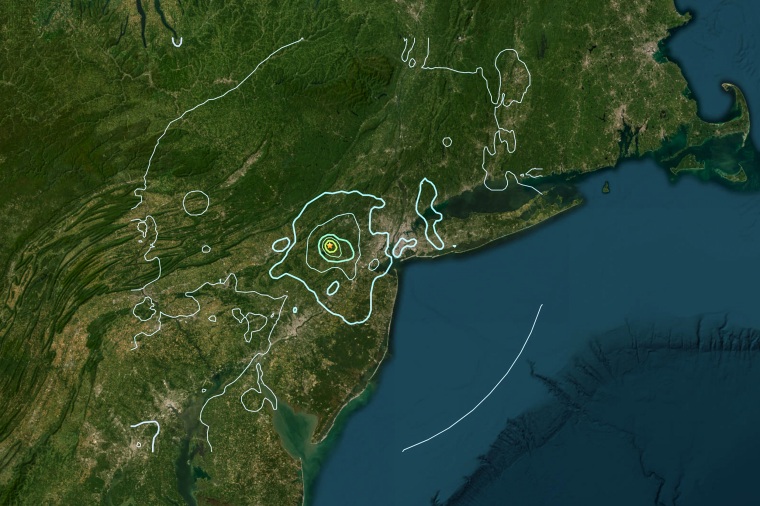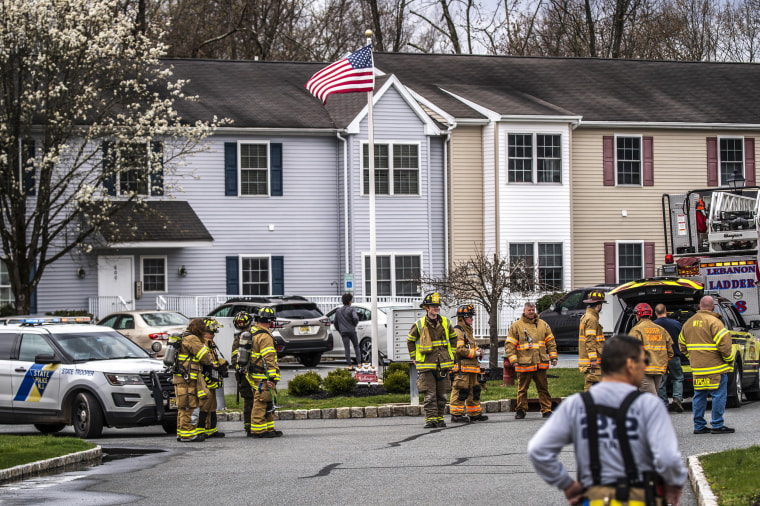The fault that ruptured beneath New Jersey on Friday morning was likely an ancient, sleeping seam in the Earth, awakened by geologic forces in a region where earthquakes are rare and seismic risks are not fully understood.
The magnitude-4.8 earthquake was the strongest in New Jersey in over 200 years.
The United States Geological Survey said in a news conference that more earthquakes are possible, with statistical modelers estimating a 3% chance of an earthquake of magnitude 5 or higher in the coming weeks.
A 4.0-magnitude aftershock struck New Jersey on Friday evening. The USGS website has reported at least 11 aftershocks in the area thus far. Statistical models based on past earthquakes suggested there could be up to 27 aftershocks of magnitude 2 or greater over the next week, the USGS said.
As the shaking calmed on Friday, scientists began working to pinpoint where exactly the rupture occurred.
“This is a region with many older faults that may be reactivated at any time. At this time, the fault that caused the earthquake isn’t yet known,” said Jessica Jobe, a USGS research geologist.

Scientists suspect that the earthquake likely originated in the area of the Ramapo fault zone in the Newark basin. The fault system contains a branching network of faults. Some are mapped but others are probably unknown, so it’s possible that the fault where the Friday quake occurred is unmapped.
“It likely occurred on an unnamed fault, but we really don’t know. It’s hard to figure that out in a place that has such a jumble,” said Dara Goldberg, a USGS geophysicist. “It could be on a branch of a Ramapo fault. It could be something adjacent, we’re not exactly sure.”
Scientists said the fault zone is old and complex. Determining precisely what happened will help researchers understand what to expect from the zone in the future and get a better handle on seismic risk in the Northeast.
Unlike the West Coast, where tectonic plates meet at a boundary and create a seismic hazard that runs down the spine of the coast, the Northeast’s tectonic risk is rooted in ancient history: Faults have persisted from tectonic processes that are no longer in action, leaving a scattering of cracks and weaknesses.

Stress accumulates slowly on this network of faults and sometimes causes a slip, producing an earthquake, said Frederik J. Simons, a professor of geosciences at Princeton University.
“The stress keeps growing at very slow rates,” Simons said. “It’s like an old house creaking and groaning.”
Compared to the West Coast, earthquakes on the East Coast can be felt at a great distance and can cause more pronounced shaking relative to their magnitude because rocks in the region are often older, harder and more dense.
“These are competent rocks that transmit energy well,” Simons said.
Friday’s earthquake was felt widely, from Washington, D.C. to Boston. It was also quite shallow — the USGS said it likely ruptured less than 3 miles beneath the Earth’s surface.
“The shallower or the closer it is, the more we feel it as humans,” Simons said.
However, the strength of earthquakes in the region is limited by the length of the faults.
“The magnitude of an earthquake is directly proportional to the length of the fault that moved,” Goldberg said. “In the Northeast, the faults just aren’t very long.”
Felix Waldhauser, a seismologist and research professor at the Lamont-Doherty Earth Observatory, said the earthquake highlighted a need to better understand the region’s earthquake risk.
“We don’t understand the faults here very well. If we don’t understand the faults, it’s difficult to assess the hazard,” Waldhauser said.
He lamented the fact that the USGS in 2019 cut funding for the Lamont-Doherty Cooperative Seismographic Network, which he said once had 45 stations collecting seismic data across the Northeast but is now down to about 20.
“In an ideal world, we would have our network running and recording data and analyzing the data, figuring out where exactly the event was,” he said.
Waldhauser said on Friday afternoon that he was trying to round up colleagues to deploy seismometers around the epicenter of the earthquake, near Whitehouse Station, New Jersey, to record aftershocks, which could help identify the main fault line.
“We’re trying to get people together. I’m not sure if it’s going to happen,” he said.
However, Goldberg said that a dense local network of equipment is most beneficial for monitoring smaller earthquakes and conducting detailed science, but isn’t a requirement to understand larger quakes like the one on Friday.
“Anything in the magnitude 4 range, we can determine in a global set of stations,” she said. “For the size of earthquakes relevant to society and people’s daily lives, we can do a fine job without that density.”
Simons, who grabbed his coat and hurried out of his Princeton office when the earthquake hit, said the 35 seconds of “violent, strong and long” shaking made for an exciting morning and offered a reminder to the country’s less seismically active coast: “This is like being a little out of shape and having a little warning — a mini-stroke, a heart attack,” he said.
“The Earth is giving us energy we can’t control. Let’s continue to build good buildings and enforce building codes and do disaster prep, so we can respond when the next one hits,” Simons said.